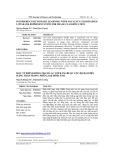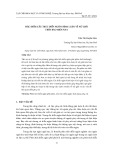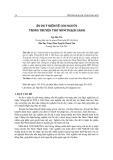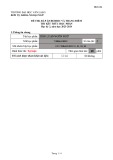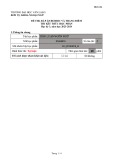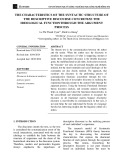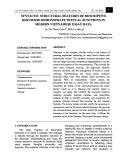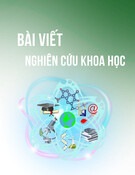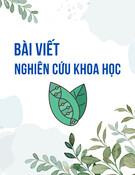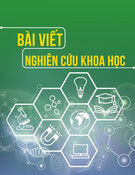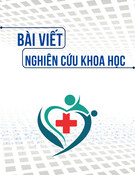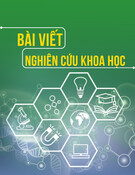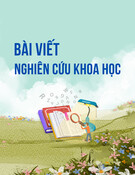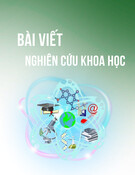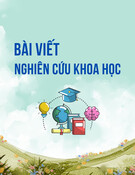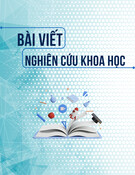
Phan Thi Thuy Tien, Lai Tan Nam / Tạp chí Khoa học và Công nghệ Đại học Duy Tân 05(66) (2024) 148-158
148
An analysis of thematic roles in news articles and short stories
Phân tích các vai nghĩa trong các bản tin và truyện ngắn
Phan Thi Thuy Tiena*, Lai Tan Nama
Phan Thị Thủy Tiêna*, Lại Tấn Nama
aFaculty of English, School of Languages, Humanities and Social Sciences, Duy Tan University, Danang, 550000,
Vietnam
aKhoa Tiếng Anh, Trường Ngôn ngữ - Xã hội Nhân văn, Trường Đại học Duy Tân, Đà Nẵng, 550000, Việt Nam
(Date of receiving article: 28/03/2024, date of completion of review: 14/05/2024, date of acceptance for posting:
25/06/2024)
Abstract
This research delves into the intriguing topic of thematic roles, one of the basic notions in the syntax. The study also
investigates the connections between thematic roles and two writing genres: journalistic and literary writing. Additionally,
it aims to offer learners a deeper understanding of how the characteristics and word usage of different texts can vary
depending on thematic roles. To accomplish these objectives, the research will identify and categorize thematic roles
based on the analysis materials, compare and analyze the frequency of thematic roles in the two writing styles.
Keywords: Thematic roles; news articles; short stories.
Tóm tắt
Nghiên cứu này đi sâu vào một chủ đề thú vị là vai nghĩa, một trong những khái niệm cơ bản thuộc cú pháp học. Nghiên
cứu cũng khám phá mối quan hệ giữa vai nghĩa và hai thể loại văn bản: báo chí và văn học, đồng thời giúp người học
hiểu sâu sắc hơn về các thuộc tính văn bản và việc sử dụng từ ngữ trong các văn bản khác nhau có thể biến đổi tùy thuộc
vào vai nghĩa. Để đạt được mục tiêu này, nghiên cứu sẽ tìm và xác định các loại vai nghĩa từ ngữ liệu khảo sát, so sánh
cũng như phân tích tần suất các vai nghĩa trong hai phong cách viết.
Từ khóa: Vai nghĩa; bản tin; truyện ngắn.
1. Introduction
During our working in English Translation
and Interpretation major at Duy Tan University,
one subject which we find to be most perplexing
yet fascinating would be Syntax in English.
Syntax plays a vital role and gives depth to
*Corresponding author: Phan Thi Thuy Tien
Email: phtthuytien@gmail.com
English linguistics. There are many complex
grammar theories which explains why
individual words are chosen and arranged in
sentences. In the course content, many students
have difficulty understanding the notion of
thematic roles and analyzing the meanings in
texts. To our realization, thematic roles can teach
05(66) (2024) 148-158
DTU Journal of Science and Technology






